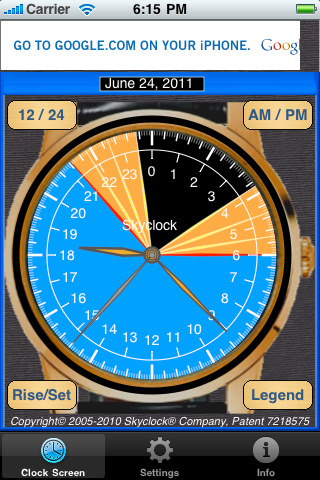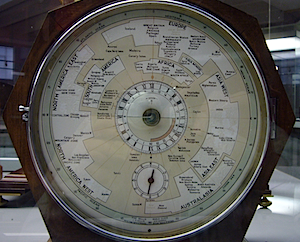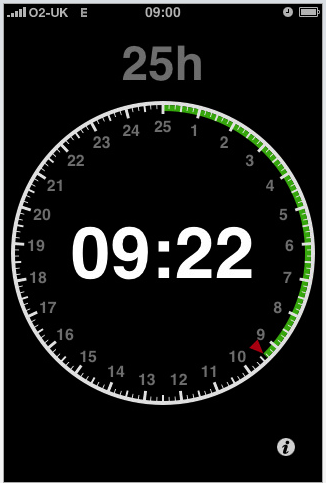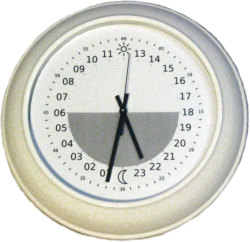Recently I think there have been a few more different ways of showing time. Here’s a picture of the clock-setting interface on an iPhone:

The illusion of a circular wheel rotating is very strong, particularly when you flick it up and down with your finger – it speeds up and slows down like a well-oiled bicycle wheel. But the display is effectively a digital clock that’s also a linear analog clock.
Measuring time as a point along a line is probably as old as angular time measurement, if not older. Early sundials from Egypt show the length of the sun’s shadow being measured on a simple graduated stick, although angular displays are also common in the ancient world. Through history the passage of time has also been marked by a change of water level, a decrease in height of a marked candle, or a change in length of a trail of slow burning incense.
A striking linear clock can be seen in Picadilly Circus tube station in London. A metal band travels from east to west over a fixed Mercator map of the world, showing the mean solar time for any location. The band itself is a 24 hour indicator, but if you think about it, it’s clear it has to be 48 hours long (since it has to go round the back of the map).

There are a number of software linear clocks around. Here’s an old one called Stripclock that I used to run on my Palm. (You can google for this but there’s no current url for the author, who might be called Fraser McCrossan) This was great because by tapping you could zoom in closer and closer onto the time display – either watch the seconds speed by or follow the imperceptible movement of the week or month.

And here’s a more recent Flash version of the idea. Not zoomable, but compelling in a different way:

(The live Flash version is at http://home.tiscali.nl/annejan/swf/timeline.swf.) Unlike the iPhone controls, you don’t get the sense of any circularity in time. To the left – if you could scroll back far enough – is the formation of the universe; to the right, the heat death of the solar system…
Notice that this style of display has exactly the same ‘problem’ as circular analog clocks: it’s hard to show the various time units to any proportional scale. A second is as big as a minute, although they move to the left much faster. This is a great picture of time flowing like water under a bridge.


















